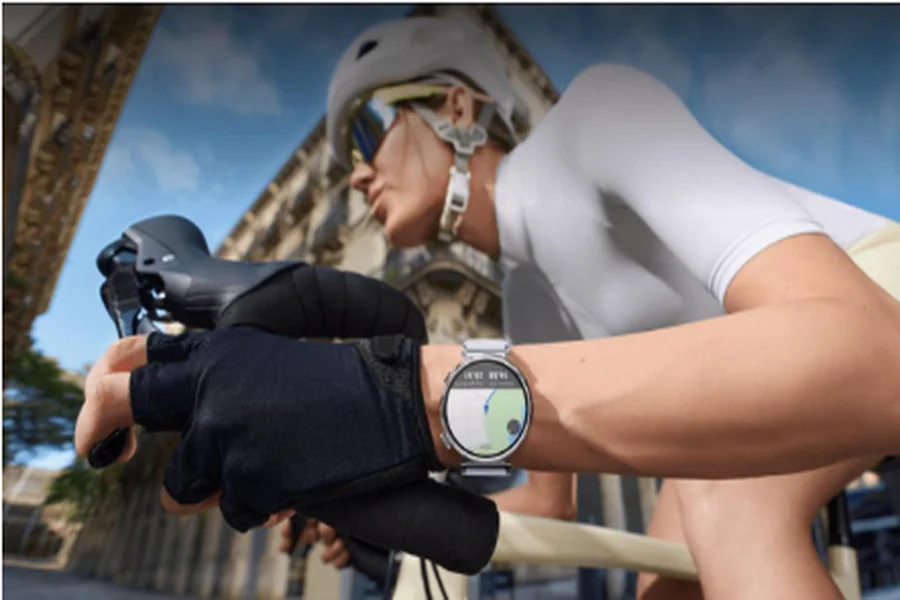Smartwatches have revolutionized cycling training and safety by providing real-time data and advanced metrics that were previously available only through specialized professional equipment. These wearable devices serve as comprehensive cycling computers, safety monitors, and training partners that enhance every aspect of the cycling experience. From tracking basic performance metrics to offering sophisticated training insights, smartwatches help cyclists of all levels optimize their workouts, monitor their health, and stay connected while on the road or trail. The integration of cycling-specific features transforms these devices from general fitness trackers into specialized tools that address the unique demands of cycling performance and safety.
Advanced Performance Metrics
Industry-First Power Monitoring
Modern smartwatches now offer simulated power metrics that provide cyclists with crucial training data without requiring expensive external power meters. This innovative feature calculates power output based on multiple data points including speed, elevation, heart rate, and pedaling rhythm. The huawei gt6 pro introduces groundbreaking cycling simulated power indicators that allow riders to measure their Functional Threshold Power (FTP) and track training progress quantitatively. This capability enables cyclists to train in specific power zones, monitor effort distribution during rides, and measure improvements in cycling efficiency over time, making professional-level training accessible to recreational and serious cyclists alike.

Precision Heart Rate Monitoring
Advanced heart rate sensors in smartwatches now deliver exceptional accuracy specifically optimized for cycling activities. Recent improvements have increased cycling heart rate accuracy from 95% to 98%, providing reliable data for training zone management and effort measurement. This enhanced accuracy ensures that cyclists can maintain optimal intensity levels during intervals, hill climbs, and endurance rides. The wrist-based monitoring eliminates the need for chest straps while providing continuous heart rate data that helps prevent overtraining and ensures effective recovery between sessions. This precise biometric monitoring enables cyclists to maximize their training effectiveness based on their individual physiological responses.
Training Optimization and Safety
Structured Training Guidance
Smartwatches provide comprehensive training support through structured workout programs, performance analysis, and recovery recommendations. The addition of FTP tracking and power zone training helps cyclists quantify their training outcomes and measure progress toward specific goals. These devices automatically detect cycling activities and record detailed metrics including distance, elevation gain, cadence, and calorie expenditure. Post-ride analysis offers insights into performance trends, highlighting strengths and areas for improvement. The Huawei Watch GT 6 Pro supports these functions with its advanced sports modes that deliver professional-grade training insights to help cyclists systematically improve their performance and achieve their personal bests.
Safety and Navigation Features
Beyond performance tracking, smartwatches enhance cycling safety through connectivity and navigation capabilities. Incident detection can automatically alert emergency contacts in case of accidents, while live location sharing allows friends or family to monitor rides in real time. Built-in GPS provides turn-by-turn navigation without requiring phone access, and weather alerts warn of changing conditions that might affect ride safety. These features work together to create a safer cycling experience, particularly for those who ride alone or explore unfamiliar routes. The always-visible display ensures critical information remains accessible without distracting from the road ahead.
Health and Recovery Management
Real-Time Physiological Monitoring
Smartwatches provide continuous health monitoring that offers significant benefits for cycling training and recovery management. Advanced sensors track blood oxygen saturation levels during high-altitude climbs, monitor stress levels to prevent overtraining, and analyze sleep patterns to ensure adequate recovery between intense riding sessions. The devices provide personalized recovery time recommendations based on workout intensity and duration, helping cyclists optimize their training schedules to prevent burnout and injuries. By monitoring these key health metrics, smartwatches help riders understand how their body responds to different training loads and environmental conditions, enabling smarter training decisions that balance performance improvement with long-term health sustainability.
Training Load and Recovery Analysis
Sophisticated algorithms analyze training data to provide comprehensive insights into workout impact and recovery needs. Smartwatches measure training load to ensure cyclists are progressing without overreaching, tracking both acute and chronic training loads to maintain optimal performance balance. Recovery advisors suggest appropriate rest periods based on workout intensity and individual recovery patterns, while sleep quality monitoring ensures riders get sufficient restorative rest. The devices also track daily readiness scores that indicate whether the body is prepared for intense training or needs additional recovery, helping cyclists avoid training when fatigued or stressed. This holistic approach to training management helps prevent overtraining syndrome and ensures consistent progress toward cycling goals.
Conclusion
Wearing a smartwatch while cycling provides benefits that extend far beyond simple activity tracking. These devices offer a comprehensive cycling ecosystem that enhances training, safety, and overall riding experience through advanced technology and intelligent features. The integration of power metrics, accurate heart rate monitoring, and structured training guidance helps cyclists of all levels improve their performance and achieve their goals more effectively. As smartwatch technology continues to advance, we can expect even more sophisticated cycling-specific features that will further bridge the gap between consumer wearables and professional training equipment. The convenience of having these capabilities integrated into a device worn daily makes smartwatches an invaluable tool for any cyclist serious about improving their performance, maintaining their safety, and getting the most enjoyment from their time on the bike.







